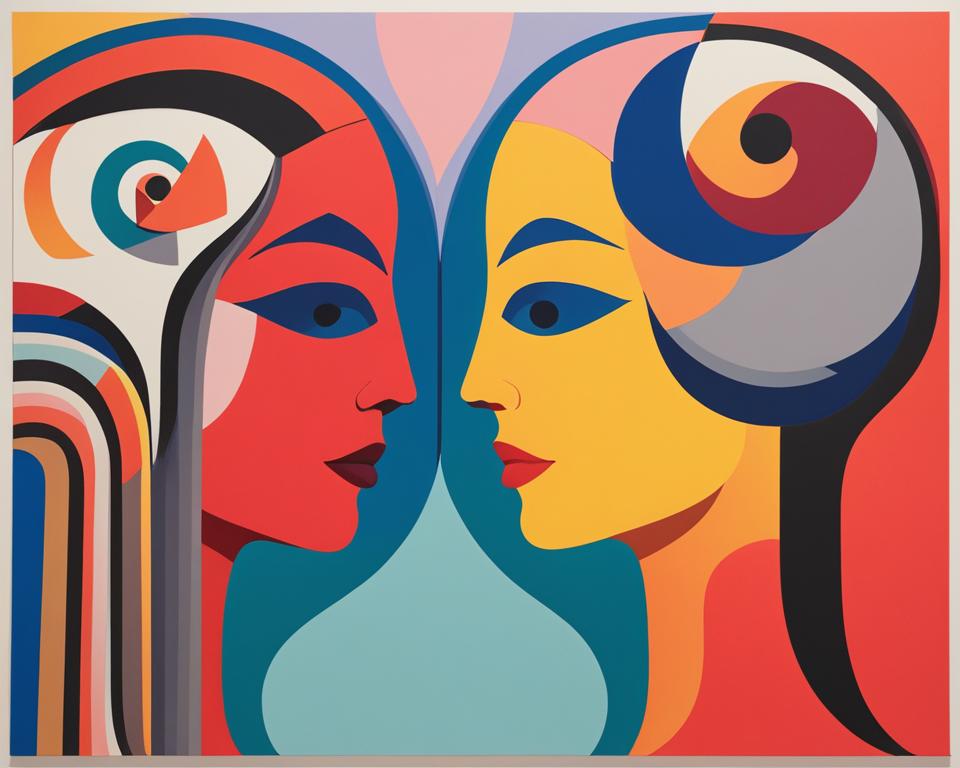If you’re looking for a thrilling and thought-provoking story, then “The Girls” by Emma Cline is an audiobook not to be missed. As a major debut novel, “The Girls” quickly gained critical acclaim, with many praising Cline’s unique writing style and powerful storytelling ability.
In this audiobook review, we’ll discuss the key elements of “The Girls”, exploring the plot, characters, and the historical and cultural context that underpins the narrative. We’ll also analyze the audiobook performance and provide our overall thoughts on the book’s strengths and weaknesses.
Key Takeaways:
- “The Girls” by Emma Cline is an engaging and suspenseful tale set in the late 1960s that explores themes of idealism and its consequences.
- Cline’s writing style, narrative structure, and use of symbolism enhance the meaning of the story and offer deeper insights into the characters and their actions.
- The audiobook narration enhances the overall listening experience through the use of voice acting and expression.
- “The Girls” is recommended for readers who enjoy character-driven stories that explore complex themes and historical contexts.
- Overall, “The Girls” is a must-listen audiobook that showcases Emma Cline’s exceptional talent as a writer and storyteller.
Overview of “The Girls”
Set in the late 1960s, “The Girls” by Emma Cline is a coming-of-age story that follows the protagonist, Evie Boyd, as she becomes entangled in a cult. The book explores the themes of idealism and its consequences, as Evie struggles to find her place in the world.
The novel is divided into three sections, each detailing a different period of Evie’s life and her experiences with the cult. From her initial infatuation with the charismatic leader, Russell, to the harrowing events that unfold in the final days of the cult’s existence, “The Girls” presents a vivid portrayal of the era and the consequences of youth and naivety.
Key Themes:
- The duality of adolescence – between rebellion and submission.
- The consequences of false idealism and its potential for destruction.
- The complex nature of female friendships and relationships in a patriarchal society.
Character Analysis
In “The Girls”, Emma Cline develops a rich cast of characters who drive the narrative forward and make it memorable. From the protagonist, Evie, to the enigmatic cult leader, Russell, each character is unique and multi-dimensional, adding depth and complexity to the story.
Evie: Evie is a sensitive and impressionable teenager, searching for belonging and purpose. Her loneliness and need for acceptance lead her to join the cult, where she develops a crush on Suzanne. As the story progresses, Evie becomes more disillusioned with the cult’s activities but is unable to leave due to her loyalty to Suzanne.
Suzanne: Suzanne is one of the most intriguing characters in the novel, with a dark past and a mysterious presence. She is charismatic, confident, and alluring, drawing Evie and other girls into the cult’s fold. However, her motivations for staying with the group are ambiguous, leaving readers wondering what drives her.
Russell: Russell is the cult’s leader, a manipulative and predatory figure who preys on vulnerable young women. He is charming and persuasive, using his charisma to control those around him. Through flashbacks, readers see his rise to power and gradual evolution into a dangerous cult leader.
Other Cult Members: The other members of the cult, including Rose, Chrissy, and Helen, are also essential to the story’s development. They play various roles in the cult’s activities, and readers get a sense of their personalities and beliefs through their interactions with Evie and Suzanne.
The character development in “The Girls” is exceptional, with each character’s motivations and relationships skillfully woven together to create a compelling narrative.
Writing Style and Narrative Structure
Emma Cline’s writing style in “The Girls” is often praised for its lyrical quality and vivid imagery. Her descriptive prose brings the late 1960s setting to life, immersing readers in the era’s counterculture movements and the characters’ tumultuous lives. Cline’s use of sensory details creates a layered atmosphere that adds to the story’s overall impact.
The narrative structure of “The Girls” is non-linear, with flashbacks and jumps in time that provide a deeper understanding of the characters’ motivations and relationships. This approach keeps readers engaged and builds suspense, as they gradually uncover the events that lead to the novel’s climactic ending. The use of multiple perspectives also allows readers to see how different characters experience and interpret the same events.
One unique storytelling technique employed by Cline is the use of foreshadowing and symbolism. Themes of innocence, idealism, and betrayal are woven throughout the novel, forming a complex web of meaning that adds layers of depth to the story. For example, the recurring use of fruit imagery symbolizes the characters’ loss of innocence and the decay of their utopian dreams.
Writing Style Analysis Table
| Writing Style Aspect | Description |
|---|---|
| Language | Cline’s language is poetic, with vivid and sensory prose that immerses readers in the story’s setting. |
| Imagery | Cline’s use of descriptive imagery creates a layered atmosphere that adds to the story’s impact. |
| Symbolism | Symbolism is used throughout the novel, with recurring images and themes that contribute to the story’s overall meaning. |
Themes and Symbolism
Emma Cline’s “The Girls” explores several intricate themes and motifs that enrich the narrative and deepen our understanding of the characters and their actions.
- The allure of cults: One of the central themes is the allure of cults and the dangers of idealism. The novel depicts how the protagonist, Evie, becomes captivated by the members of a cult and how the desire for acceptance and purpose can lead to emotional and physical harm.
- The female experience: “The Girls” exposes societal norms and pressures placed upon young women, particularly in the 1960s, and the struggle for autonomy. The author uses symbolism, including the central character’s menstrual cycle, to highlight the female experience.
- Power dynamics: The imbalance of power is explored throughout the novel, from the cult leader’s manipulative control over his followers, to the racial tensions that influence the group’s actions.
- The loss of innocence: “The Girls” examines the loss of innocence and coming of age. The story’s events, as well as the symbolism of the daisy flower, contribute to a deeper reflection on the changes and losses that come with maturation.
The symbolism in “The Girls” is equally intriguing and effectively contributes to the themes of the novel. For example, the use of the color red emphasizes strength and danger, as seen in the blood on Evie’s dress after a violent incident. The recurring imagery of daisy flowers highlights the notion of “picking” someone to love or idolize, and how this can ultimately lead to disappointment and disillusionment.
The Role of the Ranch
| Symbol | Meaning |
|---|---|
| The Ranch | A safe haven for the disillusioned and lost |
| The Pool | Represents escape and freedom, as well as danger and recklessness |
| The Girls’ Appearance | Uniforms represent conformity and loss of self |
The Ranch plays a notable role in the novel, serving as both a physical location and a symbol. It becomes a safe haven for young women trying to escape their mundane lives and the societal expectations placed upon them. However, it also represents a loss of individuality and the consequences of blind faith. The Pool, located on the Ranch, is a multi-layered symbol that represents escape and freedom, but also danger and recklessness.

Overall, Emma Cline’s use of themes and symbolism greatly enhances the reading experience of “The Girls”, providing readers with a profound exploration of human nature and the complexities of societal pressures and expectations.
Historical and Cultural Context
The late 1960s served as the backdrop for Emma Cline’s The Girls. The book tells the story of a fictional cult, but it is heavily influenced by the events and social changes of the time. The 1960s was a period of significant political and cultural upheaval. The civil rights movement, anti-war protests, and women’s liberation movements were in full swing, and the youth counterculture was challenging traditional values.
The cultural references in The Girls reflect this time of change. The music, fashion, and attitudes of the characters are all informed by the counterculture of the day. From the Beatles to the Manson Family, The Girls weaves real-life events and figures into its fictional narrative, creating a rich tapestry of historical and cultural references.
Pacing and Tension
Emma Cline’s use of pacing and tension-building techniques in “The Girls” creates a captivating reading experience that engages readers from start to finish. The novel follows the story of Evie Boyd, a young girl who becomes entranced by a group of charismatic girls in the late 1960s.
Cline’s pacing is deliberate, with moments of intense action and introspection that offer a balanced reading experience. The tension builds throughout the story, as Evie becomes increasingly involved with the girls’ dangerous activities. The author’s careful crafting of tension keeps readers engaged and invested in the outcome of the story.
The pacing and tension in “The Girls” are key components of the book’s success, drawing readers in and keeping them on the edge of their seats until the very end.
Narration and Performance
If you’re a fan of audiobooks, you’ll be pleased to know that “The Girls” audiobook delivers a top-notch performance. The audiobook narration of “The Girls” is masterfully performed, enhancing the listener’s experience of the story.
The narrator’s execution of different voices and accents allows for a deep dive into the characters’ roles, which adds an extra level of richness to the story. The narrator’s tone of voice matches the tone of the story, building the necessary tension that drives the story forward. The audiobook’s pacing is perfect, giving listeners enough time to become invested in the plot while still maintaining suspense.
Emma Cline’s prose is beautifully brought to life through the audiobook narration, proving that the format can be just as immersive as a physical copy. Whether you’re a fan of audiobooks or looking to try them out for the first time, “The Girls” audiobook is an excellent choice.
Critical Reception
Emma Cline’s “The Girls” was met with critical acclaim upon its release. The book has received numerous reviews, both positive and negative, and is widely regarded as a thought-provoking and engaging read. Many critics praised Cline’s writing style, which is both beautiful and haunting, while others appreciated the depth of the characters and their relationships.
Despite this, some reviewers criticized “The Girls” for its slow pacing and lack of plot, arguing that the book fails to live up to its potential. Others found fault with Cline’s depiction of the late 1960s and the controversial subject matter of the story.
Overall, the critical reception of “The Girls” has been largely positive, with reviewers commending Cline for her bold and ambitious debut novel. Despite some mixed opinions, most agree that it is a poignant and insightful exploration of coming-of-age amidst significant historical and cultural shifts.

Overview of Reviews:
| Review Source | Positive Comments | Negative Comments |
|---|---|---|
| The New York Times | “A seductive and arresting coming-of-age story…” | “…reading the novel can feel like watching a famous friend on Instagram; no filtered image can mask a paucity of experiences.” |
| The Guardian | “A mesmerizing and an affecting novel…Cline is a writer of breathtaking poise and insight.” | “The novel rolls and rustles along without building any kind of real tension…” |
| The Washington Post | “…an understated masterpiece…” | “…too often The Girls goes awry, overreaching its abilities, promising more than it can deliver.” |
Table: Overview of reviews of “The Girls” by Emma Cline
Comparison to Other Works by Emma Cline
Emma Cline has an impressive body of work, with “The Girls” being her debut novel. Her writing style and themes are well-defined throughout her works, making them easily recognizable as hers.
- The Girls: Set in the late 1960s, the novel delves into themes of idealism, rebellion, and the consequences of the desire for freedom and acceptance. The storytelling is poignant and engaging, with a narrative structure that immerses the reader in the protagonist’s inner turmoil.
- Daddy:A collection of short stories, this book continues to explore themes surrounding female identity, with narratives that are quietly explosive and poignant.
- All the Gifts They Cannot Take Away: This eerie short story offers an unforgettable meditation on the deep and complex nature of love and longing.
Despite the different settings and plots of her works, Cline’s signature style is immediately recognizable. Readers of “The Girls” will appreciate the consistency of her writing style and themes, while also enjoying the unique elements that make each work distinct.
Comparison of Emma Cline’s Works
| The Girls | Daddy | All the Gifts They Cannot Take Away | |
|---|---|---|---|
| Publication Year | 2016 | 2017 | 2021 |
| Themes | Idealism, rebellion, consequences of freedom and acceptance | Female identity, coming of age | Love, longing, loss |
| Narrative Style | Engaging, poignant, immersive | Quietly explosive, poignant | Eerie, meditative |
This table provides a quick comparison of Emma Cline’s works, highlighting the similarities and differences between them. Despite the variation in themes and narrative styles, her works share a common thread of exploring complex human emotions that leave a lasting impact on readers.
Recommended Audience and Final Thoughts
After exploring the audiobook of “The Girls” by Emma Cline, we recommend it to mature readers interested in coming-of-age stories and psychological thrillers. This audiobook may not be suitable for younger audiences due to mature themes, including drug use and sexual exploration.
Overall, “The Girls” provides a gripping and haunting listening experience. The audiobook is well-narrated and enhances the story’s suspenseful and introspective moments. Cline’s skillful writing creates vivid and complex characters that come to life through excellent voice acting.
We highly recommend “The Girls” audiobook to those who enjoy thought-provoking stories with nuanced characters and dark themes. It is a must-listen for fans of Emma Cline’s works and those who seek an engaging and psychological novel that demands introspection.
Where to Buy “The Girls” Audiobook
If you’re interested in purchasing the audiobook version of “The Girls” by Emma Cline, you have several options available to you. Many online retailers offer this audiobook in various formats, including CD, MP3, and digital download. Some of the retailers where you can find “The Girls” audiobook include:
- Amazon: Offers the audiobook in CD and digital download format.
- Audible: Provides a digital download of the audiobook.
- Barnes & Noble: Offers the audiobook in CD and MP3 formats.
- Google Play Books: Provides a digital download of the audiobook.
Whichever format you choose, be sure to check the compatibility with your device before making a purchase. Happy listening!
About the Author, Emma Cline
Emma Cline is an American author born in 1989 in California. She studied creative writing at Columbia University and has since become a prominent voice in contemporary fiction.
Cline’s debut novel, “The Girls,” was published in 2016 and quickly became a bestseller. The book was inspired by the Manson Family and explores themes of power, manipulation, and idealism. “The Girls” was nominated for several awards, including the John Leonard Prize and the Center for Fiction First Novel Prize.
Cline has also written for various publications, including The New Yorker, The Paris Review, and Tin House. Her short story “Marion” was included in the 2017 edition of the Best American Short Stories.
In 2020, Cline published her second novel, “Daddy.” The book follows a young woman’s relationship with an older man and explores themes of power dynamics, celebrity, and obsession. “Daddy” received mixed reviews but solidified Cline’s reputation as a bold and ambitious author.
Emma Cline’s writing is characterized by its lyrical prose, vivid imagery, and complex characters. Her work has been praised for its psychological depth and sensitivity towards issues of gender, power, and identity. With two acclaimed novels under her belt, Cline is undoubtedly a rising star in contemporary literature.
FAQ
Is “The Girls” by Emma Cline available as an audiobook?
Yes, “The Girls” by Emma Cline is available as an audiobook.
Where can I purchase the audiobook version of “The Girls”?
You can purchase the audiobook version of “The Girls” by Emma Cline from various online retailers and platforms.
Can you provide a brief overview of “The Girls” by Emma Cline?
“The Girls” by Emma Cline is set in the late 1960s and follows the story of a young girl who becomes involved with a cult. It explores themes of idealism and its consequences.
Are there any notable reviews of “The Girls”?
“The Girls” by Emma Cline has received both positive and negative reviews. The overall consensus among reviewers highlights the book’s strengths in character development and atmospheric storytelling.
What is the writing style of Emma Cline in “The Girls”?
Emma Cline’s writing style in “The Girls” is marked by vivid descriptions and a lyrical prose. She skillfully weaves together past and present narratives to create a captivating reading experience.
Are there any recurring themes or symbolism in “The Girls”?
“The Girls” by Emma Cline explores themes of identity, power dynamics, and the allure of forbidden desires. It also incorporates symbolism, such as the cult itself representing a distortion of idealism.
What is the historical and cultural context of “The Girls”?
“The Girls” is set in the late 1960s, a period marked by countercultural movements and social unrest. The story reflects the influence of that time period on the characters’ lives and their search for belonging.
How does the audiobook narration of “The Girls” enhance the listening experience?
The audiobook narration of “The Girls” adds depth to the story through voice acting and expressive performances. It immerses listeners in the atmosphere of the book and brings the characters to life.
Who is the author of “The Girls”?
“The Girls” is written by Emma Cline, an acclaimed author known for her captivating storytelling and atmospheric prose. She has also authored other notable works.
What is the suitable audience for “The Girls”?
“The Girls” by Emma Cline is recommended for readers who enjoy literary fiction, coming-of-age stories, and explorations of complex characters and relationships. It may not be suitable for those seeking light or fast-paced reads.
Where can I find more of Emma Cline’s works?
Emma Cline has authored other notable works, including [insert titles]. You can find her books at various online retailers and bookstores.



